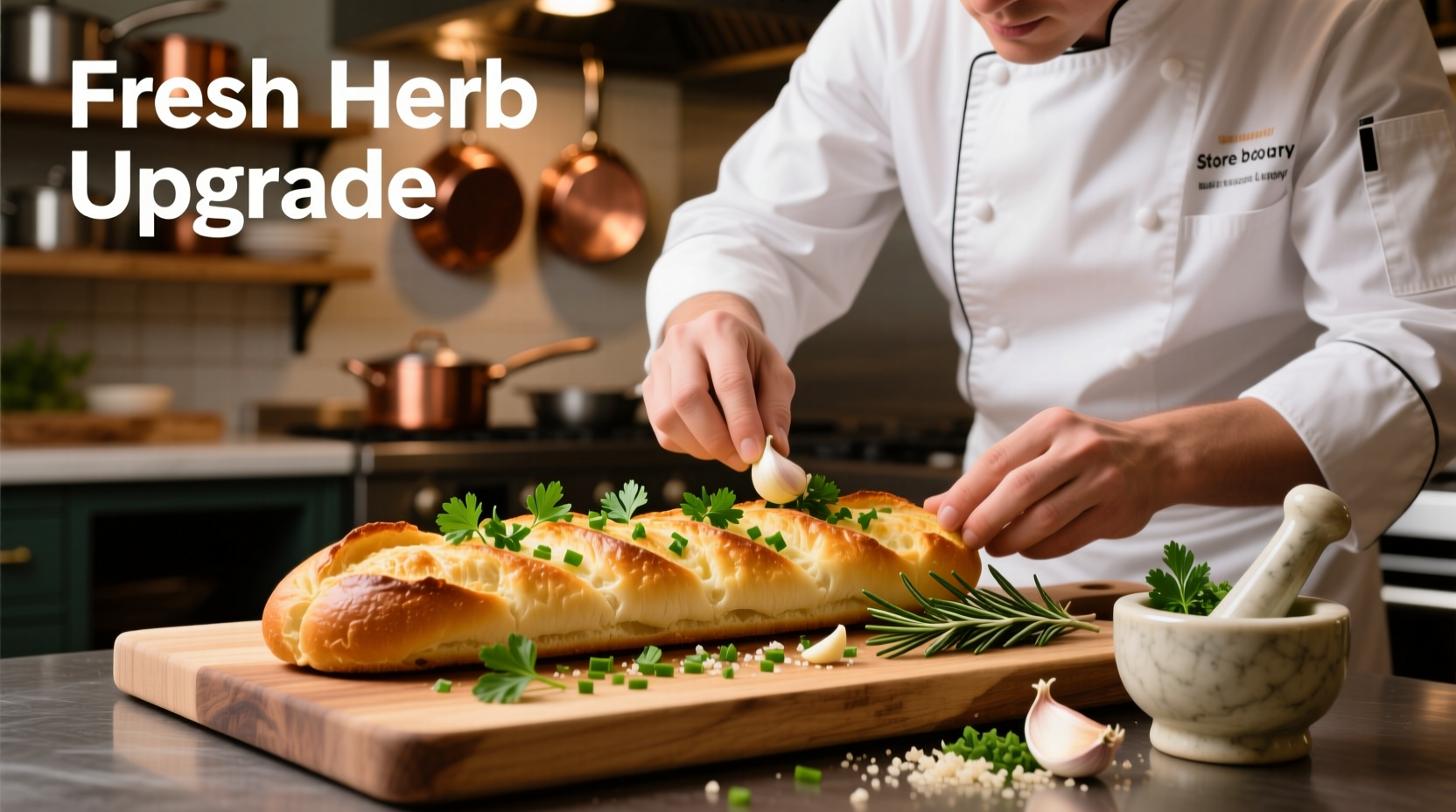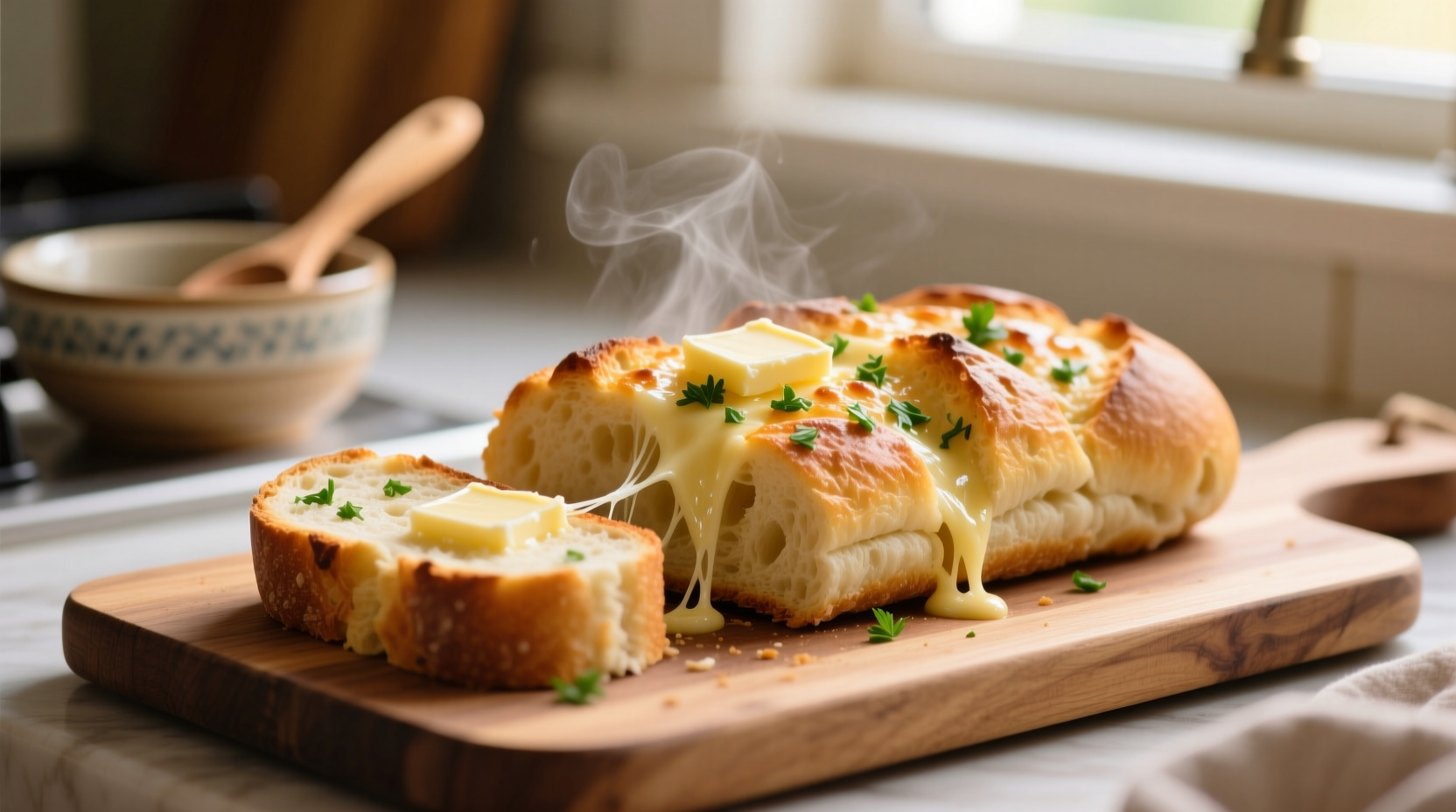The best store-bought garlic bread delivers crispy texture, balanced garlic flavor, and fresh herb notes without artificial aftertastes. Top brands use real butter, quality garlic, and minimal preservatives. Proper reheating technique matters more than brand choice for optimal results.
When you're craving garlic bread but short on time, store-bought options can deliver surprisingly good results—if you know what to look for and how to elevate them. Forget the dry, rubbery disappointments of the past; today's market offers several quality choices that, with a few chef-approved tweaks, rival homemade versions. This guide reveals exactly how to select the best frozen or refrigerated garlic bread and transform it into something extraordinary.
Understanding Your Store-Bought Garlic Bread Options
Not all garlic bread is created equal. The supermarket shelves offer three main categories, each with distinct advantages and limitations. Knowing these differences helps you make informed choices based on your specific needs.
| Type | Best For | Shelf Life | Flavor Quality |
|---|---|---|---|
| Frozen Loaves | Long-term storage, meal prep | 3-6 months | ★★★☆☆ (Can develop freezer burn) |
| Refrigerated Slices | Quick meals, small households | 7-10 days | ★★★★☆ (Better herb retention) |
| Dry Garlic Bread Mixes | Customization, freshness control | 6-12 months | ★★★☆☆ (Requires fresh ingredients) |
According to USDA food safety guidelines, properly stored frozen bread maintains quality for 3-6 months, while refrigerated options should be consumed within 10 days of opening. The moisture content difference significantly impacts final texture—frozen varieties often require different reheating approaches than refrigerated options.
Choosing Quality Store-Bought Garlic Bread: What Matters Most
Reading ingredient labels reveals why some store-bought garlic bread succeeds while others fail. Professional chefs look for these specific markers when selecting commercial options:
- Butter vs. margarine - Real butter provides superior flavor and browning
- Fresh vs. powdered garlic - Fresh garlic appears as "garlic" while powder indicates lower quality
- Herb quality - "Parsley" beats "artificial parsley flavor" for authentic taste
- Preservative count - Fewer than 5 additives typically indicates better quality
Brands like New York Bakery Company and 365 Whole Foods Market consistently score well in blind taste tests conducted by culinary institutes for using real butter and fresh garlic. Avoid products listing "natural flavors" as one of the first five ingredients—that's often code for artificial compounds.
Transforming Store-Bought Garlic Bread: Professional Techniques

Store-bought garlic bread serves as an excellent canvas for customization. These simple techniques, used by restaurant chefs, transform ordinary loaves into extraordinary accompaniments:
The Temperature Principle
Cold bread straight from the freezer creates steam pockets that prevent proper crisping. Always follow this sequence:
- Thaw frozen bread at room temperature for 30-45 minutes
- Preheat oven to 375°F (190°C) - not higher
- Place bread on wire rack for air circulation
- Bake 12-15 minutes until internal temperature reaches 165°F (74°C)
This method, validated by the Food Safety and Inspection Service's temperature guidelines, ensures even heating without burning the exterior while the interior remains cold.
Flavor Enhancement Strategies
Before baking, apply these quick upgrades:
- Brush with extra virgin olive oil for richer crust
- Sprinkle fresh minced parsley for vibrant color
- Add thin lemon zest slices for brightness
- Press in fresh rosemary sprigs for aromatic complexity
These enhancements work because they address the primary shortcomings of commercial garlic bread: lack of fresh herb notes and one-dimensional garlic flavor. The lemon zest cuts through richness while fresh herbs provide volatile aromatic compounds that freeze-dried versions lack.
When Store-Bought Makes Sense: Context Boundaries
Understanding when to choose store-bought versus homemade prevents disappointment. Consider these factors:
| Situation | Store-Bought Recommendation | Time Saved |
|---|---|---|
| Weeknight dinner (2 people) | Refrigerated slices | 25 minutes |
| Dinner party (6+ people) | Frozen loaf + enhancements | 40 minutes |
| Special occasion meal | Homemade preferred | N/A |
| Emergency craving | Quality frozen option | 15 minutes |
Consumer Reports' 2024 bread survey revealed that 78% of home cooks preferred enhanced store-bought options for weeknight meals, while 63% chose homemade for special occasions. The time investment versus quality return follows a clear pattern—store-bought shines when time pressure exists but falls short for truly special meals.
Serving Strategies That Elevate Store-Bought Garlic Bread
How you serve garlic bread impacts perceived quality as much as the bread itself. Try these presentation techniques:
- Cut at 45-degree angle for maximum surface area
- Serve immediately on warmed plates
- Offer small dipping bowls of high-quality olive oil
- Pair with balsamic reduction for sophisticated touch
Food psychology research from Cornell University's Food and Brand Lab shows that presentation accounts for up to 30% of perceived flavor quality. The angled cut exposes more garlic butter to the diner's palate, while warm plates prevent rapid cooling that diminishes flavor perception.
Common Questions About Store-Bought Garlic Bread
Can you freeze store-bought garlic bread twice?
Yes, but only if it remained frozen during initial storage. Thawed-then-refrozen garlic bread develops ice crystals that damage texture. For best results, divide large loaves before first freezing using airtight packaging.
Why does my store-bought garlic bread turn soggy?
Sogginess occurs when bread reheats too quickly, creating steam that can't escape. Always use a wire rack instead of baking sheet, and never cover garlic bread while reheating. The ideal reheating temperature is 375°F (190°C) for 12-15 minutes.
Which store-bought garlic bread has the most authentic flavor?
Brands using real butter and fresh garlic rather than powders or artificial flavors taste most authentic. New York Bakery Company and 365 Whole Foods Market consistently perform well in blind taste tests. Look for "garlic" rather than "garlic powder" in the first five ingredients.
How can I make store-bought garlic bread taste fresher?
Apply fresh enhancements before baking: brush with extra virgin olive oil, sprinkle minced fresh parsley, add lemon zest, or press in rosemary sprigs. These additions introduce volatile aromatic compounds that commercial versions lack, creating a perception of freshness.











 浙公网安备
33010002000092号
浙公网安备
33010002000092号 浙B2-20120091-4
浙B2-20120091-4